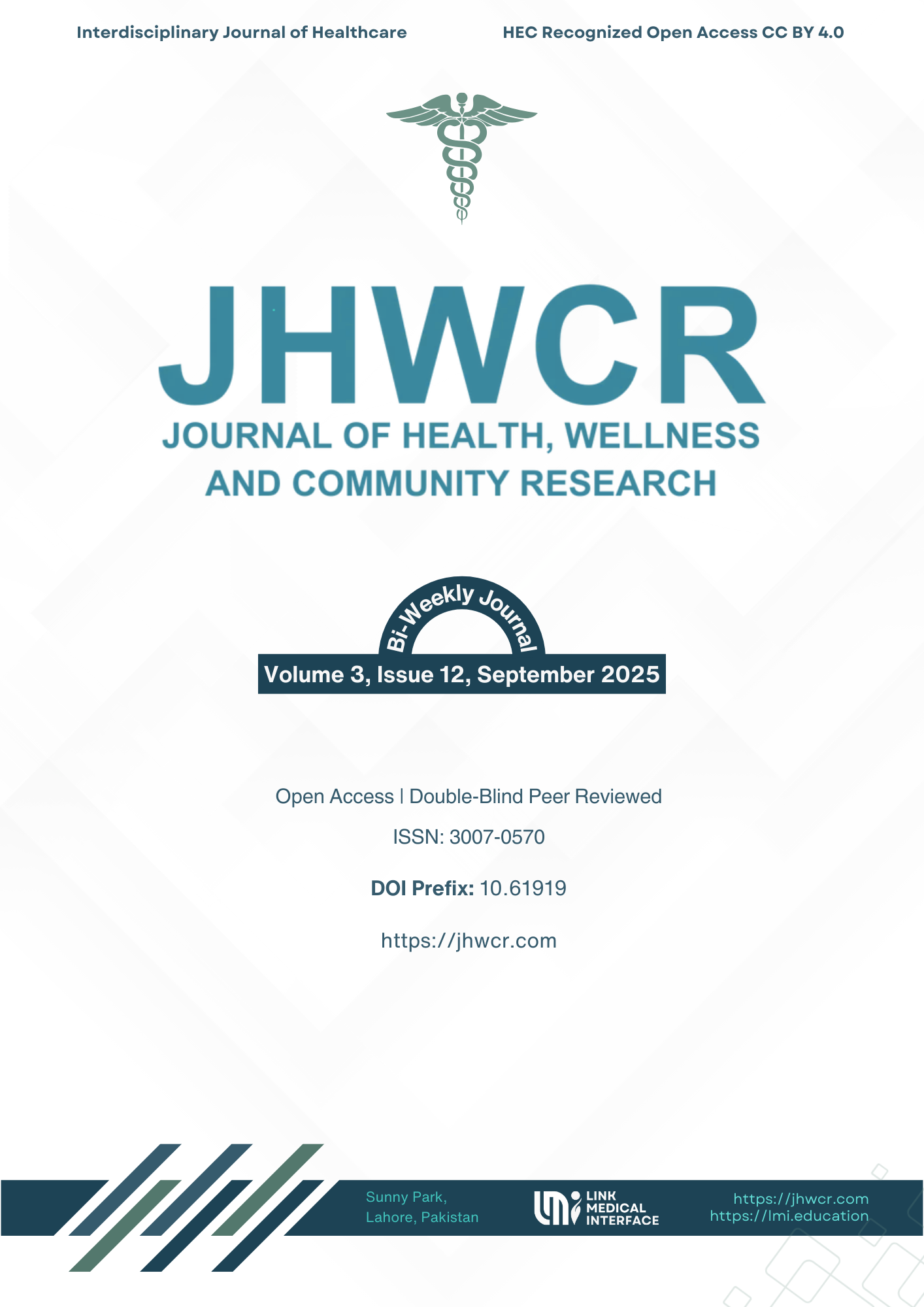Association of Bulging Disc in Elderly Obese and Non-Obese Patients on MRI
DOI:
https://doi.org/10.61919/4nfh1e87Keywords:
Lumbar Disc Bulge, Obesity, MRI, Degenerative Spine Disease, Elderly, Low Back PainAbstract
Background: Lumbar disc bulge is a common degenerative spinal condition contributing significantly to low back pain in elderly populations. Obesity has been implicated as a modifiable risk factor through mechanical loading and metabolic inflammation, yet the independent relationship between body mass index (BMI) and MRI-defined disc bulge remains unclear. Objective: To determine the association between obesity and lumbar disc bulge among elderly patients undergoing MRI for low back pain, and to evaluate age- and sex-related influences on this relationship. Methods: A cross-sectional observational study was conducted on 101 adults aged ≥40 years presenting with low back pain to five tertiary hospitals in Lahore, Pakistan. Lumbar spine MRIs were evaluated for the presence and type of disc bulge by blinded radiologists. Obesity was defined as BMI ≥30 kg/m². Associations were analyzed using chi-square tests and logistic regression adjusted for age and sex. Statistical significance was set at p < 0.05. Results: Of 101 participants (mean age 51.4 ± 9.1 years; 63.4% female), 40.6% were obese and 54.5% exhibited lumbar disc bulge. Disc bulge occurred in 65.9% of obese versus 46.7% of non-obese participants (unadjusted OR = 2.22; 95% CI 0.97–5.12; p = 0.057). After adjustment for age and sex, obesity remained a borderline predictor (adjusted OR = 2.11; 95% CI 0.95–4.69; p = 0.065). No significant associations were found with age or sex. Non-compressive disc bulge was the most frequent MRI finding (12.9%), followed by lumbar spondylosis (16.8%). Conclusion: Lumbar disc bulge is prevalent among both obese and non-obese elderly individuals, with a higher yet statistically borderline frequency in the obese group. These findings suggest that while obesity may accelerate disc degeneration, age-related and biomechanical factors also play key roles. Preventive strategies should integrate weight management with postural and physical activity interventions
Downloads
Published
Issue
Section
License
Copyright (c) 2025 Wajiha Zafar, Vinsa Maryam, Samia Arif, Laiba Malik, Rimsha Alam, Samia Ahsan, Muhammad Abdullah (Author)

This work is licensed under a Creative Commons Attribution 4.0 International License.


